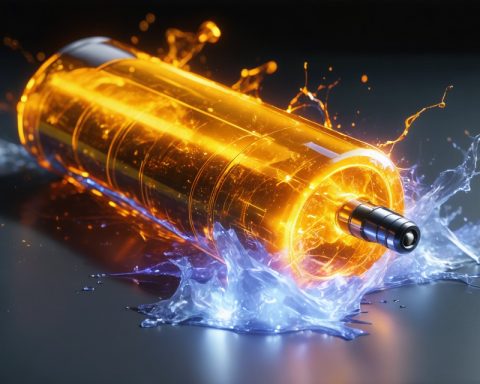Tech Innovators Unveil the Next Big Thing in Sustainable Power
In a world striving for greener technology, High Performance Battery (HPB) is making waves with its latest innovation—the transformative Solid State Battery 2 (SSB-2). As this new solution makes its way into the limelight, it promises not just a leap in technology but a potential overhaul in how we perceive energy storage.
The SSB-2 offers something truly revolutionary in the energy sector: it replaces conventional liquid electrolytes with solid ones. This simple, yet profound shift enhances energy density and longevity while minimizing safety concerns traditionally associated with lithium-ion batteries, such as leaks and fires. These attributes are not just theoretical; they point towards tangible benefits like longer-lasting devices and safer power systems for both consumer electronics and electric vehicles.
The Real Challenge: Manufacturing Costs
Despite the enthusiasm surrounding solid-state technology, the path to widespread use is daunting. The primary roadblock is economic: how can high-performance, solid-state solutions become financially viable? The hope rests on continued technological advancements and economies of scale to drive down costs. Proponents remain optimistic that these barriers can be dismantled over time.
A Global Perspective on Sustainable Energy
While solid-state batteries could redefine electric vehicle reach and grid storage solutions, they also introduce complex questions about raw material scarcity and geoeconomic dynamics. Their reliance on rare materials could exacerbate supply chain issues, raising concerns about future sustainability.
As the discourse unfolds, industries and governments must carefully navigate these challenges. Whether HPB’s SSB-2 will catalyze an energy revolution or highlight cascading issues remains to be seen. What is certain is that this innovation has sparked a pivotal discussion about the future of sustainable energy sources.
The Unexpected Social Impact of Solid-State Batteries
The advent of Solid State Battery 2 (SSB-2) by High Performance Battery (HPB) has stirred excitement in the technological sphere, yet beneath the technical advancements lie profound social and geopolitical impacts. As cutting-edge technology encounters real-world applications, its repercussions extend beyond engineering marvels, delving deep into societal evolution.
How Will SSB-2 Affect Global Economies?
Solid-state batteries, poised to revolutionize energy storage, will significantly impact global economies. Nations with rich mineral deposits, crucial for SSB-2 production, like lithium, cobalt, and nickel, may witness a surge in economic influence, potentially altering existing geopolitical structures. However, excessive mining could pose environmental and social risks, pressuring these nations to balance economic gain with sustainable practices.
Advantages and Disadvantages for Communities
Communities could experience both benefits and drawbacks of SSB-2 integration. On one hand, renewable energy initiatives could flourish, fostering jobs in emerging green sectors. Yet, this transformation might exacerbate the urban-rural divide, as rural areas might struggle to keep pace with technological advancements due to inadequate infrastructure.
Controversies Surrounding Raw Material Scarcity
The reliance on rare materials demands a closer examination. Could the pursuit of solid-state batteries incite new forms of colonialism, where powerful nations exploit weaker ones for resources? This question echoes with historical significance but also invites a discourse on the need for fair trade practices and ethical sourcing.
Conclusion: As the world stands at this technological crossroads, the challenge lies in ensuring that innovations like the SSB-2 foster inclusivity rather than inequality. The task ahead for governments and industries is not just to overcome technical and economic barriers but to ensure equitable distribution and sustainable development.
For further details on the broader impacts of solid-state technology and sustainable development, visit World Bank or United Nations.












